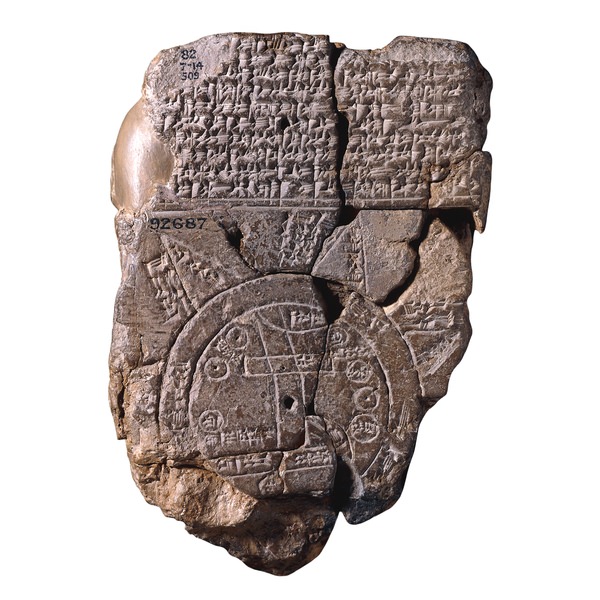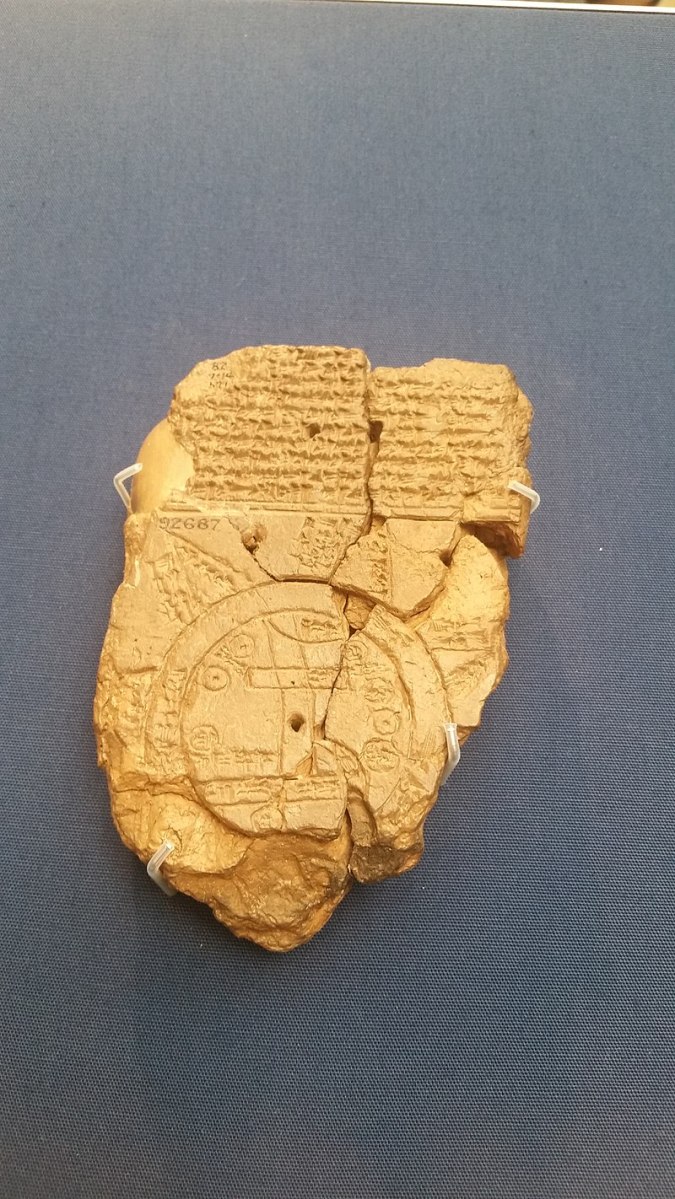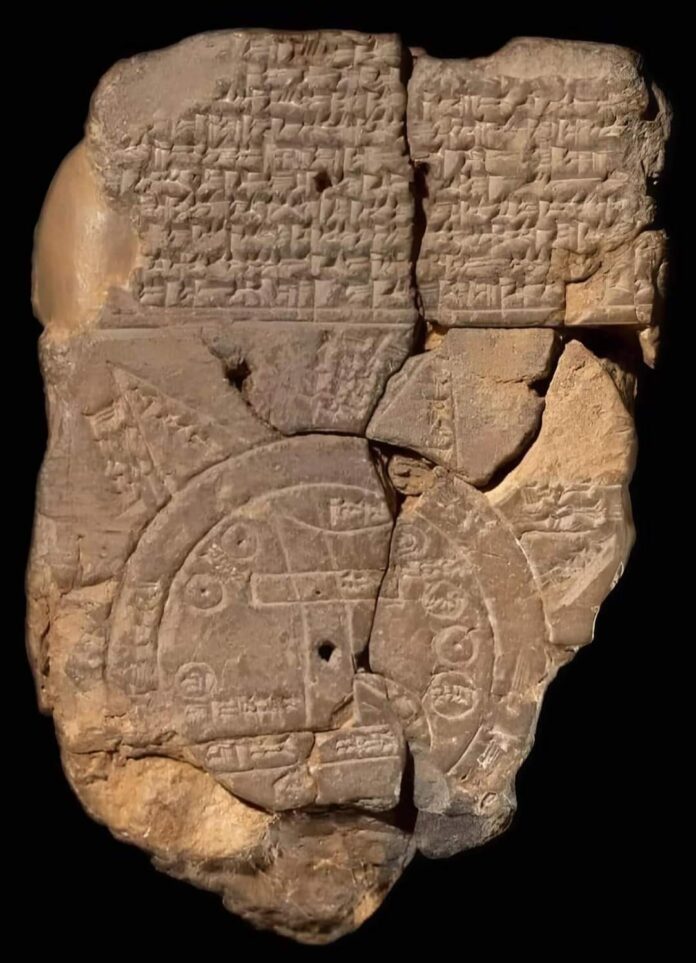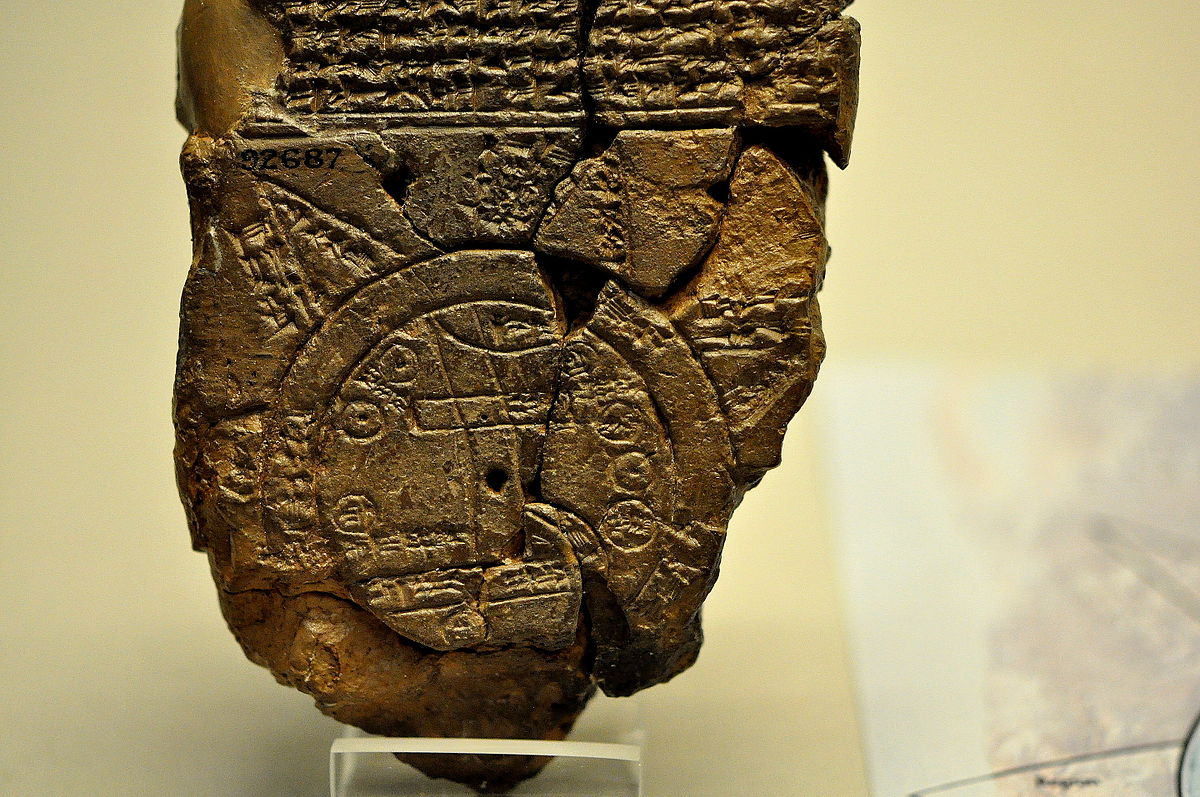The ancient world has long captivated our imaginations, offering tantalizing glimpses into the beliefs, perspectives, and knowledge of civilizations that shaped the course of human history. Among the most intriguing artifacts from this bygone era is a remarkable cuneiform tablet that not only contains a unique map of the Mesopotamian world but also reveals the Babylonian worldview through its accompanying text. This tablet, dated to around 700-500 BCE and likely originating from Sippar in southern Iraq, provides a fascinating window into the mythological and geographic understanding of an ancient culture.
The Mesopotamian World Map

At the heart of this remarkable artifact is a circular map that depicts the Mesopotamian world as the Babylonians envisioned it. The map is centered on the city of Babylon, shown as a rectangle in the top half of the circle, with other prominent regions such as Assyria and Elam also clearly labeled. Surrounding this central area is a circular waterway known as the “Salt-Sea,” which is in turn encircled by what were originally eight distinct regions, each represented by a triangular shape.
These triangular regions are labeled as either “Region” or “Island,” and the text accompanying the map provides intriguing details about the mythological creatures and legendary heroes believed to inhabit these mysterious realms. While the text is not entirely complete, it offers a tantalizing glimpse into the Babylonian perception of the world beyond their own borders.
Approaching the Mythological Landscape
The triangular shape of the regions surrounding the central Mesopotamian world is a deliberate choice, as the Babylonians envisioned these areas as first appearing in this manner when approached from the sea. This innovative cartographic technique reflects the Babylonians’ understanding of the world and their attempts to reconcile the physical landscape with their mythological beliefs.
Interpreting the Mesopotamian World Map
While the map has sometimes been interpreted as a serious attempt at ancient geography, scholars have come to recognize that its true purpose was to convey the Babylonian view of the mythological world. The placement of the regions and the inclusion of fantastical creatures and legendary figures suggest that this map was not intended as a literal representation of the physical world, but rather a symbolic portrayal of the Babylonians’ cosmological beliefs.
The Significance of the Mesopotamian World Map

This remarkable artifact offers a unique and invaluable glimpse into the worldview of an ancient civilization. By combining a visually striking map with a rich textual narrative, the Mesopotamian world map provides us with a tangible link to the beliefs, perspectives, and cultural imagination of the Babylonians. It invites us to step outside our own modern understanding of the world and engage with the mythological and geographical conceptions that shaped the lives and experiences of those who lived centuries ago.
Conclusion
The Mesopotamian world map is a testament to the enduring power of ancient artifacts to captivate and enlighten us. Through its intricate design and compelling textual accompaniment, this cuneiform tablet transports us to a bygone era, revealing the Babylonians’ unique perspectives on the world around them. As we continue to study and interpret this remarkable artifact, we gain invaluable insights into the rich tapestry of human civilization, and the enduring curiosity that has driven us to explore and understand the mysteries of the world since the dawn of time.

